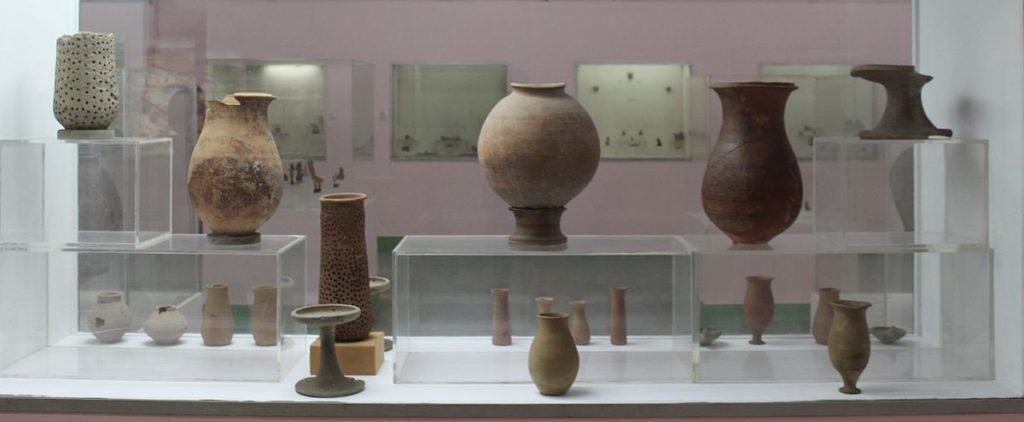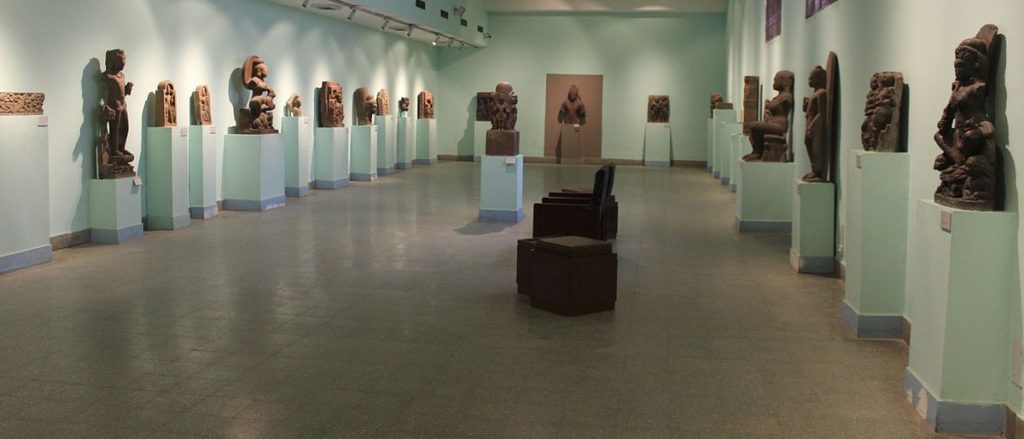
Museums are crucial institutions in the assertion of nationhood and national identity, especially for newly independent states. In India, as in several other decolonised states in Asia, Africa and Latin America, the erection of a national museum was an act of great symbolic importance (Singh). The National Museum was sought as a tool to legitimise the identity of the young nation-state, to assign value to its heritage anew – attempting to shed the legacy and shadow of its colonial masters. However, the institution of a museum, in many ways, is strongly rooted in colonial histories and reflects the understanding of the natives through the eyes of the coloniser. As a result, museumization and archivization in India, as in many postcolonial countries, becomes fraught with both – the politics of nationalism and the politics of colonialism. How does a newly independent country use an institution strongly inscribed with its colonial history, in order to create and assert its own national identity?
History of the National Museum in Colonial India
The National Museum in Delhi was originally conceived by the Raj, its blueprint having been prepared by the Maurice Gwyer Committee in May 1946– right at the cusp of independence. While the organisational scheme for the museum had been drawn up prior to WWI, in 1912, the expenditures of war caused the plan to be abandoned. The cause of the museum picked up once again in the mid-1940s, possibly due to the mounting pressures of decolonisation; the museum might have appeared as an urgent symbol of enduring empire (Phillips). In the early 1940s, the nationalist sentiment was that the British had failed to bring modern, technological developments to India. The museum potentially served as a reminder of ‘progressive’ imperial rule (Phillips).
As an institution, the museum came to India as a part of the knowledge-creating project of the Raj (Singh). Early museums during the Raj aimed to provide a synopsis of the region. They were encyclopaedic in scope and served the imperial fantasy of creating a complete and comprehensive archive of the empire. These museums, hence, captured the essence of the subcontinent through a British lens.
As India’s trade grew, ‘economic and industrial’ museums also became more common. They played the more instrumental role of marketing India’s products to boost their demand internationally. The taxonomy of collections and artefacts was as per specific industries, designed to display the various skills and processes available within India, such as woodworking, textiles, metallurgy, etc.

The National Museum’s Significance Post-Independence
Three months after India’s independence, the Royal Academy in London mounted an exhibition titled ‘The Arts of India and Pakistan’. It was politically significant and occurred with the full support of the government machinery in both Britain and the Indian subcontinent. It amassed around two hundred collections. While the exhibition failed to attract crowds in London, its incarnation in India after the objects were returned to the country was far more successful. These collections were put on display in an exhibition of ‘Masterpieces of Indian Art’ at the Durbar Hall of Rashtrapati Bhawan for the Indian public – it was thronged with visitors and high dignitaries. The compression of around five thousand years of Indian art was viewed as a valuable mirror to the national self, and Prime Minister Nehru thought it would be a pity to disperse the exhibition. It was then that the idea of a National Museum for post-colonial India was concretised. The Ministry of Education retained this exhibition, seeking to make it the nucleus of a new National Museum. This temporary exhibition at the Rashtrapati Bhavan became the National Museum of India.
The National Museum had two tasks – to show that India was eternal and that it was great (Singh). Nehru regarded the museum as a place where Indians could take pride in their pasts, unite, and be inspired to move into their future (Phillips). At the macro-level, the museum needed to transform its identity with the backdrop of decolonisation, while at the internal level it needed to promote national integration within the plurality of India (McLean). Negotiating these factors made the museum implicit in the construction of national history, for the curation of artefacts would voice some cultures and traditions, while silencing others- influencing contemporary perceptions of identities within the national frame.
As per the Delhi National Museum’s official website, it houses around 200,000 objects that span across more than five thousand years of “Indian cultural heritage”. What is this “Indian heritage”– what subcultures are prioritised, and which ones are marginalised? Can ‘five thousand years of history and heritage’ justly be represented in the collections and objects it houses? These are important questions in unpacking museumization and the creation of national identity and capturing of national history.
The Museum and the Narrative of National History

To demonstrate that India had always been great, the main burden of the narrative fell upon stone sculptures, as large numbers of them had survived through the centuries (Singh). Their superficial resemblance to Greek and Roman stone sculptures also allowed them to foreground how Indian civilisation rivalled European civilisation in some ways. The Museum attempted to build a coherent and chronological history of these sculptures, beginning with the Maurya and Sunga art and arriving to its ‘sophisticated’ expression in the Gupta period (Singh), which is termed the “classical” period of Indian sculpture.
However, this chronology and historical narrative wane out in other sections of the museum, which are composed of specialised galleries for Manuscripts, Painting, Textiles etc. Objects produced outside the early Buddhist shrines and Hindu temples have been placed outside the creation of this historical narrative. For instance, objects from Islamic context are absorbed into a particular cultural or historical period, but a material – textiles or metalwork for example. The National Museum falls back to the typology employed by the industrial museums during colonial times.
The layout and design of the museum were envisioned as one that paralleled some of the finest institutions of the world. European “experts” were called upon to approve and confirm the architectural and lighting plans for the institution. Several artefacts were obtained by purchases or donations from private collections. As a result, the core of the National Museum’s collections was contingent and shaped by the tastes of elite Indian families (Phillips). These families had also amassed the objects at a time where European items dominated the definitions of aesthetics. The curation and purchasing of private collections begs the question: how could the National Museum truly serve the cultural needs of the entire nation and represent the class and ethnic diversity when its core collections were contingent on the personal tastes of the regional elite?
These conflicts and contradictions make the National Museum a fraught site, striving to project the voice of a newly independent India with a distinctive and rich historical culture, but often buckling under the colonial realities that contributed to its inception. However, this is not to dismiss its significance to the independent nation-state. As historian Kavita Singh has said, “it is not what the museum does, but the fact that it exists that makes the museum national.” Given its establishment right at independence, and its location at the heart of the country’s political capital, the National Museum’s symbolic meaning is arguably enough to assert India as a sovereign land.
Ananya Vyas is a third year at Ashoka University, majoring in Political Science and minoring in Environmental Studies.


